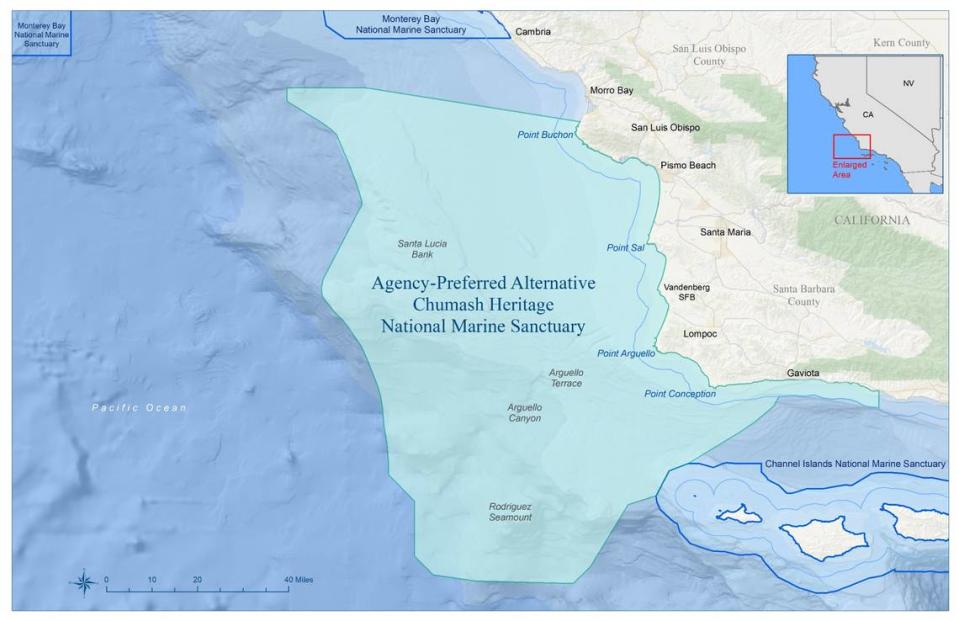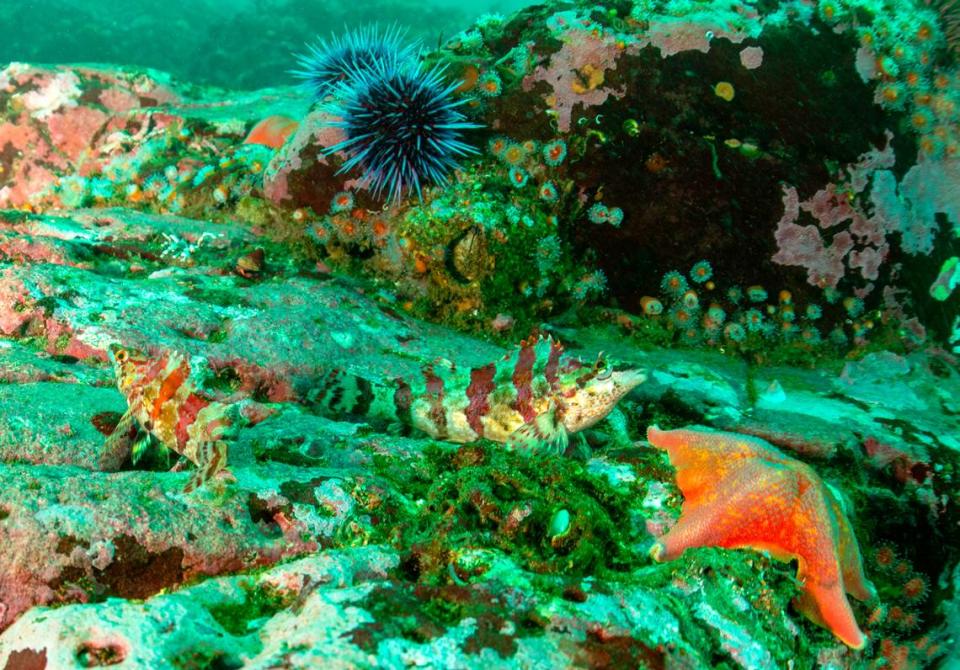Chumash leaders, wind companies unite on plan for marine sanctuary. Here’s how
California’s newest marine sanctuary should be approved in two phases to support the “co-existence” of the sanctuary and offshore wind, the Northern Chumash Tribal Council and the three Morro Bay offshore wind leaseholders wrote in a shared letter to the National Oceanic and Atmospheric Administration on Tuesday.
The offshore wind lessees include Even Keel Wind, Equinor and Golden State Wind.
The letter supports NOAA’s proposed boundaries for the Chumash Heritage National Marine Sanctuary, which would encompass 5,617 square miles of the coast from Hazard Canyon Reef, south of Morro Bay, to Naples, a spot north of Goleta in Santa Barbara County.
However, the letter also asks NOAA to pledge to add the remaining 30 miles of San Luis Obispo County’s coast to the sanctuary “at an appropriate time,” a news release from the groups said.
The letter recommended that NOAA add a Sanctuary Expansion Action Plan to the Sanctuary’s Management Plan that promises to add the rest of the coastline to the sanctuary.
“Two major initiatives to protect biodiversity and address climate change are being proposed for California’s Central Coast: the Chumash Heritage National Marine Sanctuary and the development of offshore wind,” State Senator John Laird said in the release. “We are at a critical moment where both can be achieved, as long as we can work together. This letter represents considerable thought and leadership by the Northern Chumash Tribal Council and the three offshore wind developers, and I support it. This spirit of cooperation is exactly what California needs to face the considerable challenges that lie ahead.”

What could the marine sanctuary look like?
The Chumash Marine Sanctuary would serve to protect marine ecosystems, shipwrecks and underwater Chumash cultural and historic sites on the Central Coast. Offshore oil drilling and certain sea floor disturbances would be prohibited in the sanctuary.
In August, NOAA released a draft of the marine sanctuary boundaries, which excluded 30 miles of coastline in northern San Luis Obispo County that appeared in the original proposal.
That area stretches from just north of Point Buchon to Cambria, and includes the offshore wind lease areas.
NOAA excluded this area from the sanctuary so it could “serve as a corridor for the industrial development associated with offshore wind energy production,” its website said. “Certain concentrations of this infrastructure may not be compatible with a national marine sanctuary depending on the number of cables and disturbance that could occur.”
However, the Northern Chumash Tribal Council and the offshore wind lease holders said in the letter that offshore wind development can be compatible with the purpose of the sanctuary.
“Golden State Wind believes that responsible offshore wind development is compatible with and complementary to the NOAA Office of National Marine Sanctuaries mission through the proposed sanctuary to promote marine conservation and reduce the impacts of climate change,” Golden State Wind Executive Officer Tyler Studds said in the release.

A phased approval of the sanctuary allows NOAA to protect the majority of the coastline immediately, while giving offshore wind some time and space to develop, the letter said.
“At this crucial time, we must prioritize conservation efforts and take concrete steps to secure the Chumash Heritage National Marine Sanctuary,” chairwoman of the Northern Chumash Tribal Council Violet Sage Walker said in the release. “Our collective participation in this work over the years should inspire us to push forward with even greater determination. If we work collaboratively and cooperatively to address climate change, we can overcome any obstacles in our way. Failure to do so will result in losses for all of us.”
She added: “Let’s move forward confidently and make a positive impact together.”
In February, Congressman Salud Carbajal co-signed a letter calling for NOAA to extend the marine sanctuary boundaries further north to meet the border of the Monterey Bay National Marine Sanctuary.
Now, he supports the proposal to approve the sanctuary in two phases.
“I’m encouraged to see Central Coast stakeholders speaking with one voice today to emphasize our unanimous commitment to creating the Chumash Heritage National Marine Sanctuary,” Carbajal said in the release. “This unity should be a reminder to all that protecting our environment and meeting our renewable energy goals is not a zero-sum equation.”
NOAA is expected to release the sanctuary’s final designation documents later this year.


